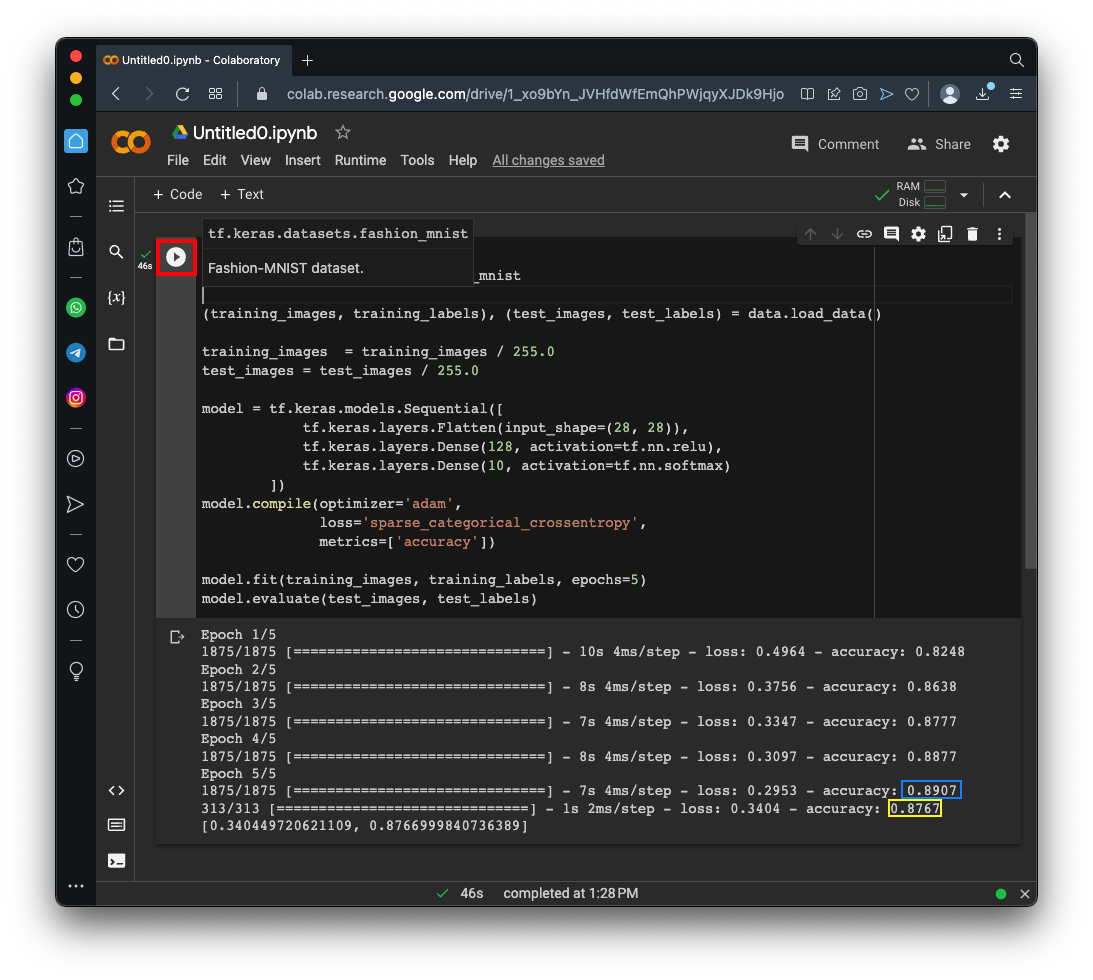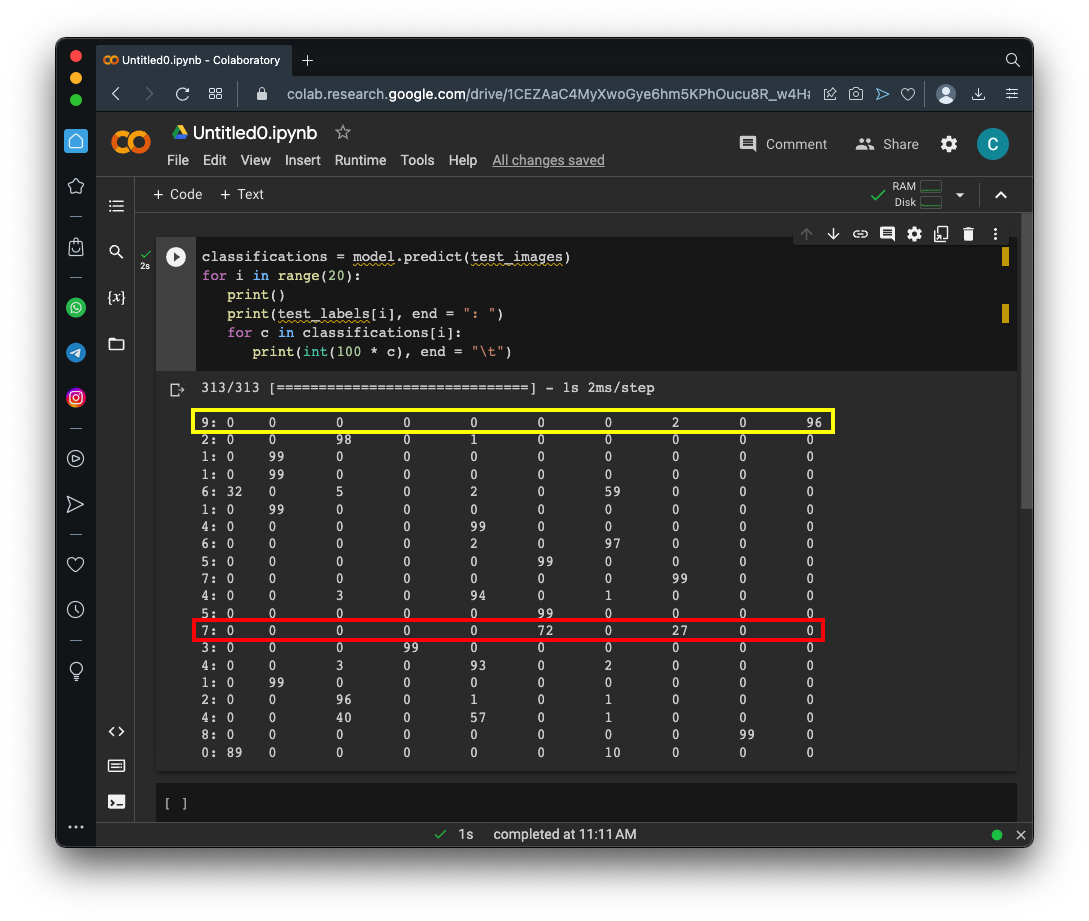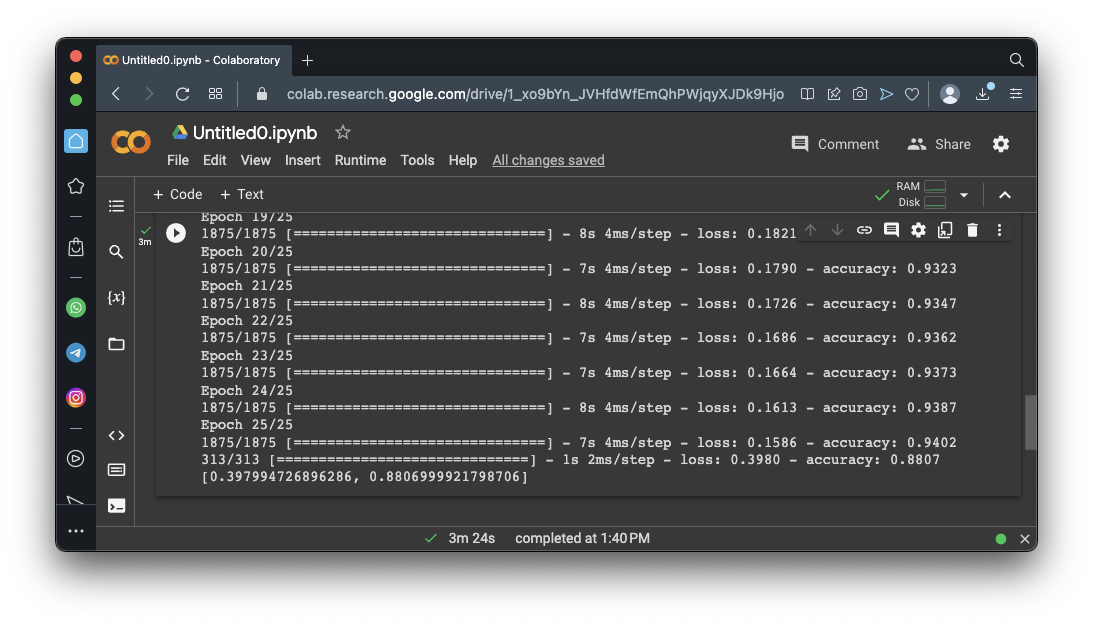https://colab.research.google.com/If you see a blue "Sign In" button at the top right, click it and log into a Google account.
From the menu, click File, "New notebook".
The image below shows some of the images.
Here are the ten classes:
Each image is a set of 784 values (28 × 28) between 0 and 255. These act as X values.
To solve this problem, we need a more complex neural network, as shown below. (Image from the textbook in the "Sources" at the bottom of this page.)
import tensorflow as tf
data = tf.keras.datasets.fashion_mnist
(training_images, training_labels), (test_images, test_labels) = data.load_data()
training_images = training_images / 255.0
test_images = test_images / 255.0
model = tf.keras.models.Sequential([
tf.keras.layers.Flatten(input_shape=(28, 28)),
tf.keras.layers.Dense(128, activation=tf.nn.relu),
tf.keras.layers.Dense(10, activation=tf.nn.softmax)
])
model.compile(optimizer='adam',
loss='sparse_categorical_crossentropy',
metrics=['accuracy'])
model.fit(training_images, training_labels, epochs=5)
model.evaluate(test_images, test_labels)
Notice the two "accuracy" numbers at the bottom right. The first one, outlined in blue, is the accuracy of the model when applied to the training set, which is 0.89 (89%). The second number, outlined in yellow, is the accuracy of the model when applied to the test set, which is 0.87 (87%).

Enter the code below:
classifications = model.predict(test_images)
for i in range(20):
print()
print(test_labels[i], end = ": ")
for c in classifications[i]:
print(int(100 * c), end = "\t")
On each line of the output, the first number is the correct category, and the next ten numbers are the percentages the model puts out for category 0, 1, 2, ... through category 9.
In the image below, look at the first line of the output, outlined in yellow. The correct category is 9, and the network found a 96% probability for column 9. It found the correct category.
Look at the line outlined in red in the image below. Here, the network was confused, giving category 5 a probability of 72% and category 7 a proabability of 27%. The model failed for this image.

Enter the code below:
import tensorflow as tf
data = tf.keras.datasets.fashion_mnist
(training_images, training_labels), (test_images, test_labels) = data.load_data()
import matplotlib.pyplot as plt
image= test_images[0]
fig = plt.figure
plt.imshow(image, cmap='gray')
plt.show()
image= test_images[11]
fig = plt.figure
plt.imshow(image, cmap='gray')
plt.show()
As you can see, the first image is clearly an Ankle Boot, but the other one could be either a sandal or a sneaker.
model.fit(training_images, training_labels, epochs=25)
Would more training improve the model? Perhaps not--sometimes the model becomes too specialized to the training data and actually makes more errors with test data, a problem called overfitting.

Flag ML 101.1: Learning with Errors (10 pts)
Delete all the code.Run the code below:
The flag is covered by a green rectangle in the image below.
Posted 4-10-23
Video updated 4-20-23
"extra" removed from points 9-16-23